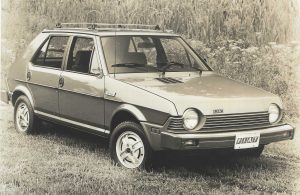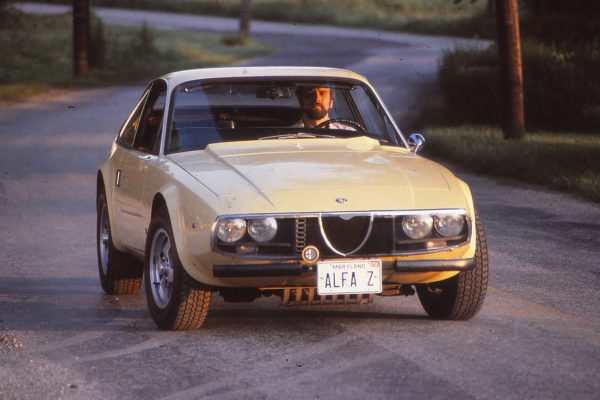Feature originally published in European Car July 1994
Double overhead cams, tidy handling, Italian style: what’s not to like? Well, how about emissions controls as clumsy and power sapping any on earth? Federal bumpers aesthetic as a double-knit leisure suit on Michelangelo’s David? U.S. smog and safety laws did horrible things to Fiat 124 Sport Coupe, and the poor lovely disappeared from our shores after the 1975 model year. It was just as well.
It was, nonetheless, a shame. The coupe always seemed to have such potential that was never quite realized. Fiat management never quite realizing that, in addition to everything else, Americans wanted torque and horsepower. And it wasn’t enough just to paint the lines on your dyno’s dial closer together. We had dynamometers over here on just about every street corner, and when they change from red to green their honesty was very sobering. Granted, one does not live by stoplight Grand Prix alone, but it is, so to speak, the alfredo on your fettuccine.
Worse yet, by 1973 Fiat was, like every other manufacturer, locked into a downward spiral of horsepower and drivability. The coupe’s original 1438 cc dohc engine had been stroked to 1608 cc for 1972, yet peak horsepower declined by six ponies, down to 90 bhp at 6600 rpm. There was, of course, much more power inside, but not available within the technology and legal constraints of the day. That particular genie would have to stay in the bottle for another 20 years before Ron Norton, of Solebury, Pennsylvania, let it out of the bottle.
By that time, the Sport Coupe needed more than a power infusion. The dreaded tin worm seems to have particular appetite for Italian, particularly in the Northeast, requiring a full job on Ron’s 124 including new steel panels.
Wanting a European rally racer look, Ron added front and rear fiberglass spoilers and removed the bumpers – the “P” holes allowed the bumper mounts to pass through the sheet-metal. His painter objected, however, to Ron’s paint scheme, a white nose on dark blue, but since Ron was paying for the urethane he got his way. And then even the painter admitted that Ron had the right idea.
Yet Ron was looking for more than looks. The Sport Coupe had independent double A-arm front suspension and a well-located rear live axle on coil springs, but Stage III springs lowered the car and firmed up its handling, and were further aided by a 1.0-in. anti-roll bar front, a half inch bar at the rear.
Boge +S shocks were installed and Yokohama A-001R 205/60HR13 tires were mounted on genuine Abarth 13×6 magnesium alloy wheels. Brakes, already disc front and rear, were rebuilt and new pads installed.
Then there was that 1608cc under the hood. While a new starter, water pump and alternator were prudent additions, where the double overhead cam really needed help was in compression. Ron had .015 in. of aluminum milled off the head and then installed 9.8:1 Pistons in a 1mm of the standard 80mm bore. To give the compression something to work with, Ron replaced the standard progressive two-barrel Weber with dual 40IDF Weber downdraft carburetors on a PBS racing intake manifold. Abarth rally cams with heavy-duty valve springs made best use of the valves, which had been given a slick five-angle competition grind. A tube header and a 2.0-in. Daytona exhaust system performed alimentary duties. The bottom end was balanced, and to aid longevity an oil cooler and a Wingate baffled oil pan were added, as well as a high-pressure oil spring. The flywheel was lightened and a heavy-duty clutch and pressure plate installed. The five-speed transmission (from a time when a four-speed was a hot set up) needed no changes.
A rollbar, competition harness, and a battery relocated to the truck make Ron’s 124 sport coupe less of a grand tourer then it once was, but the car’s allegro has been changed to an allegretto and there’s nothing, but nothing, not to like.












What Do You Think?
You must be logged in to post a comment.